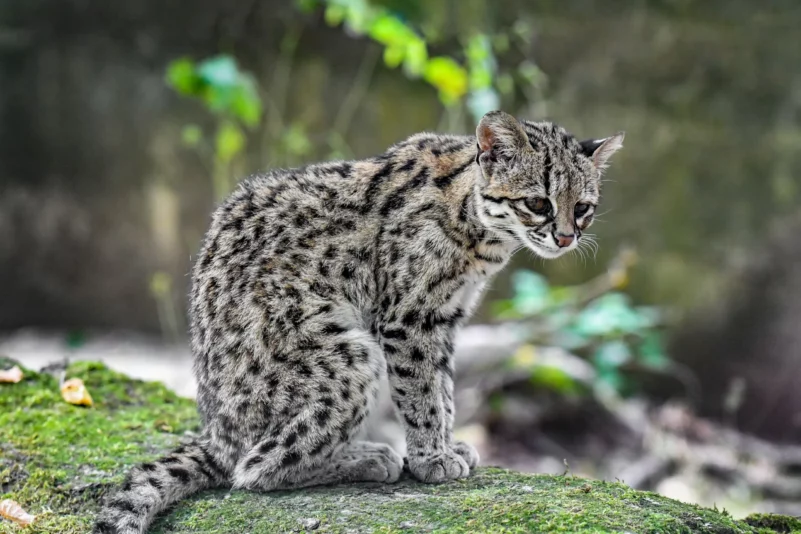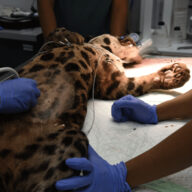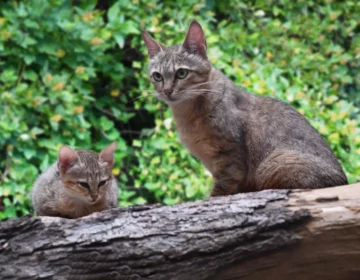
Tigress ocelot
Leopardus tigrinus
Tigress ocelot
APPEARANCE
Tigercelots are small cats with slender body, with proportions similar to domestic cats. While some individuals are small and weigh only about 1.8 kg, others – larger – weigh about 3.5 kg.
Tiger cats show variation in coloration. Tigercelots from the western part of their range are darker in colour, orange-brown to yellow and grey-brown. The rosettes on the coat are medium in size and tend to form oblique bands. Meanwhile, tiger ocelots from eastern South America have a lighter base color with a spectrum of light yellow to greyish yellow. Their rosettes are smaller and do not merge into oblique bands. The pale-coloured belly is covered with spots. Tigercelots have large ears with a black back a white spot in the middle, and a striped tail.
DISTRIBUTION AND HABITAT
The range of the tiger ocelot extends from Costa Rica and Panama in Central America, through South America, and into central Brazil.
The tiger ocelot is found in a wide range of habitats. These include tropical and subtropical rainforests, deciduous/semi-evergreen forests, montane and foothill forests, semi-arid thorny scrub, and moist savannas.
FOOD
Small mammals (up to 100 g), birds, and reptiles (especially lizards).
MAIN THREATS
The main threats to the tiger ocelot are habitat loss and fragmentation due to deforestation and human persecution. In Colombia, mist forests are being replaced by coffee or eucalyptus plantations, and the Brazilian Cerrado is being converted to cereal cultivation.





